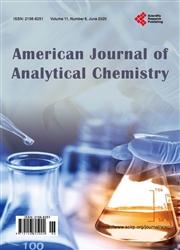Synthesis and Characterization of Nano-Acetamiprid—New Plant Safeguard Nanomaterial
引用次数: 3
Abstract
In present days many types of materials are used to reduce the environmental pollution in the world which includes nanomaterials. Nanopesticides increase the efficacy, durability and reduction in the amount of active constituent. The potential applications of nanotechnology in pesticides are quick decomposition in soil or plant, targeted delivery, apparent solubility and controlled release. In this communication the author reported a neonicatonoid insecticide called as Nano-acetamiprid and it is widely used to control fungal infections in different crops like cotton, leafy vegetables, citrus fruits, pome etc. The author reported a facile method i.e. a new Nano-acetamiprid for plant disease control and its subsequent characterization of encapsulated complex using polycaprolactone as an encapsulated agent. Nano-acetamiprid encapsulated particles were characterized by dynamic light scattering (DLS), ultraviolet spectroscopy and scanning electron microscopy (SEM). To ascertain the formation and the stability of nanoencapsulated acetamiprid pesticide, the maximum absorption spectra formulated at 421 nm and unformulated pesticide at 520 nm were observed. The size distribution was noted at 40 - 50 nm. The bioactivity study was conducted against various Aspergillus niger. The performance of nano particles was many fold times effective when compared to the original parental particles. The bio-assay of Nano-acetamiprid shows better results when compared to the normal commercial acetamiprid.新型植物防护纳米材料纳米乙酰胺的合成与表征
目前,世界上许多类型的材料被用于减少环境污染,其中包括纳米材料。纳米农药提高了药效、持久性,并减少了活性成分的数量。纳米技术在农药中的潜在应用是在土壤或植物中的快速分解、靶向递送、表观溶解性和控释。在这篇通讯中,作者报告了一种被称为纳米醋氨虫的新烟碱类杀虫剂,它被广泛用于控制不同作物的真菌感染,如棉花、叶菜、柑橘类水果、桃子等。本文报道了一种简便的植物病害防治纳米虫脒制备方法,以及以聚己内酯为包封剂对其包封复合物的表征。采用动态光散射(DLS)、紫外光谱(uv)和扫描电镜(SEM)对纳米啶虫脒包封颗粒进行了表征。为了确定纳米胶囊化的啶虫脒农药的形成及其稳定性,分别在421 nm处和520 nm处观察了制剂和非制剂的最大吸收光谱。粒径分布在40 ~ 50 nm。对其对多种黑曲霉的生物活性进行了研究。纳米粒子的性能比原始的母粒子有效许多倍。对纳米虫脒的生物测定结果表明,纳米虫脒的生物测定结果优于普通市售虫脒。
本文章由计算机程序翻译,如有差异,请以英文原文为准。
求助全文
约1分钟内获得全文
求助全文

 求助内容:
求助内容: 应助结果提醒方式:
应助结果提醒方式:


